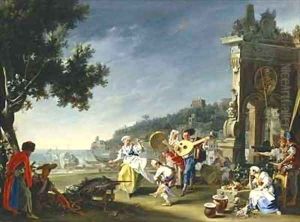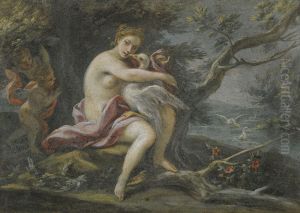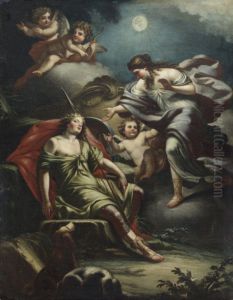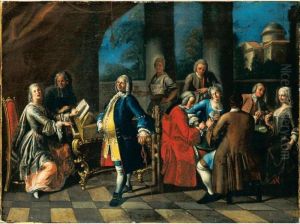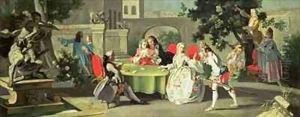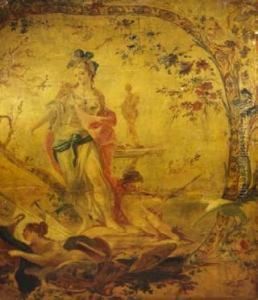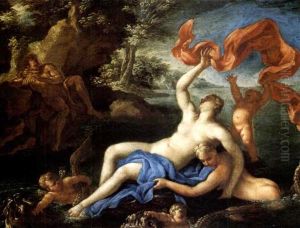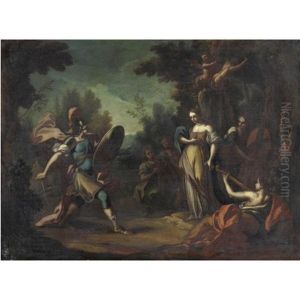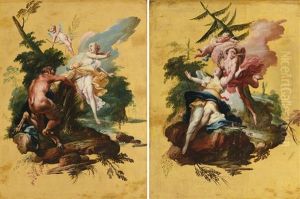Filippo Falciatore Paintings
Filippo Falciatore was an Italian painter, born in Naples in 1707. His work is often associated with the late Baroque and early Rococo periods, capturing the transition in artistic styles during the 18th century. Falciatore showed a keen interest in painting from a young age, studying under notable artists of his time, which helped him develop a distinctive style characterized by vivid colors, dynamic compositions, and a delicate handling of light.
Falciatore's oeuvre includes religious subjects, genre scenes, and landscapes, demonstrating his versatility as an artist. He was particularly esteemed for his genre scenes, which depicted everyday life with a charming and often idyllic quality. These works were highly sought after by the Neapolitan aristocracy and collectors, contributing to his success during his lifetime.
In addition to his paintings, Falciatore was involved in the vibrant artistic community in Naples. He collaborated with other artists and was a member of various artistic circles, where he gained respect for both his talent and his character. Despite his success, there is a relative scarcity of detailed biographical information, which is not uncommon for artists of his period.
Falciatore continued to work and contribute to the Neapolitan art scene until his death in 1768. Today, his works are held in private collections and museums, appreciated for their contribution to the development of Italian art in the 18th century. His legacy is that of an artist who captured the spirit of his time with elegance and a sense of immediacy, making his work enduringly appealing to art lovers and scholars alike.
